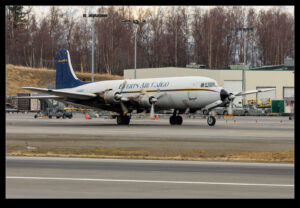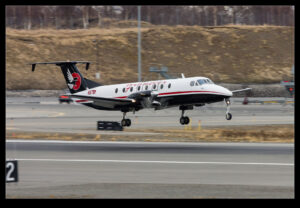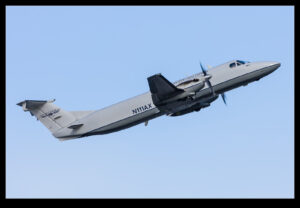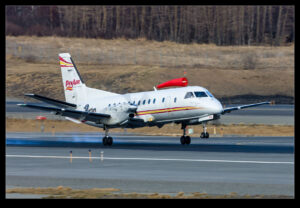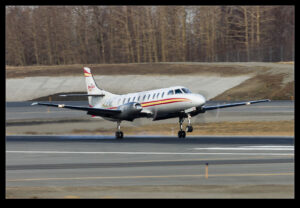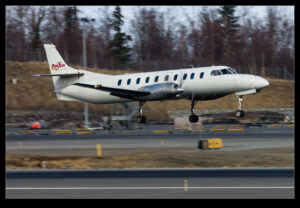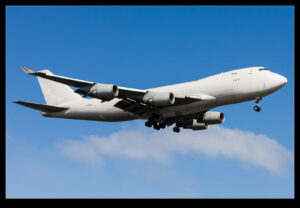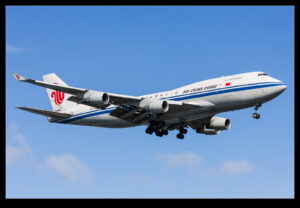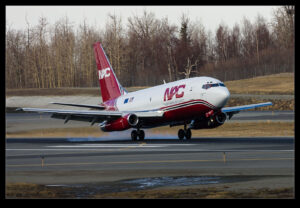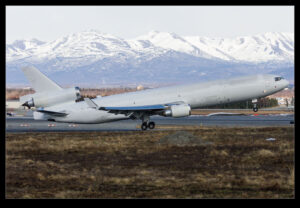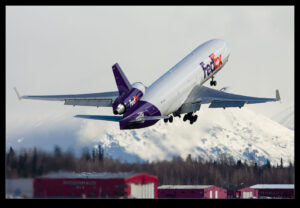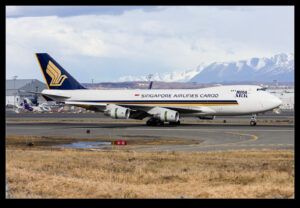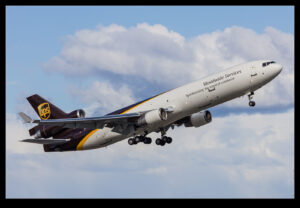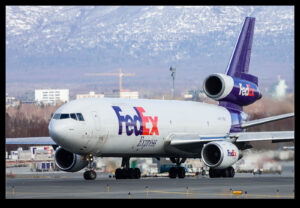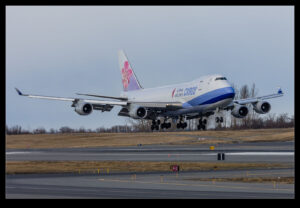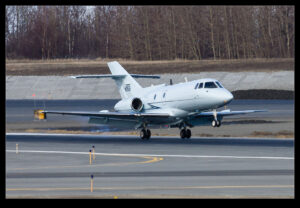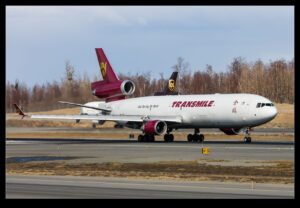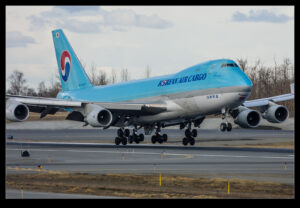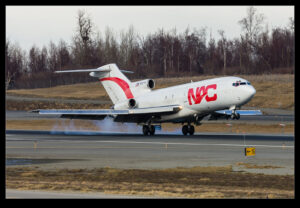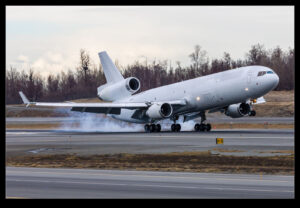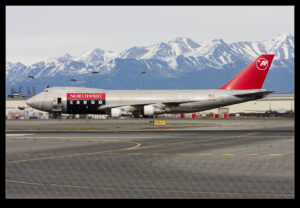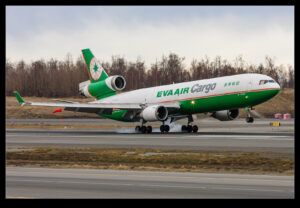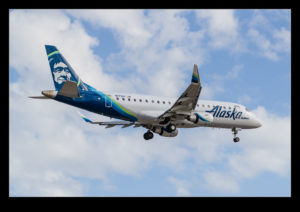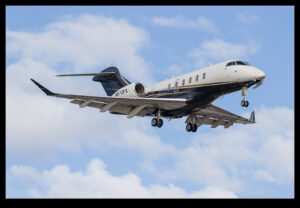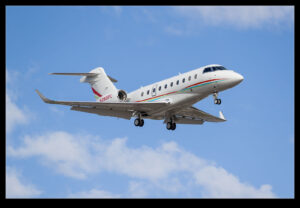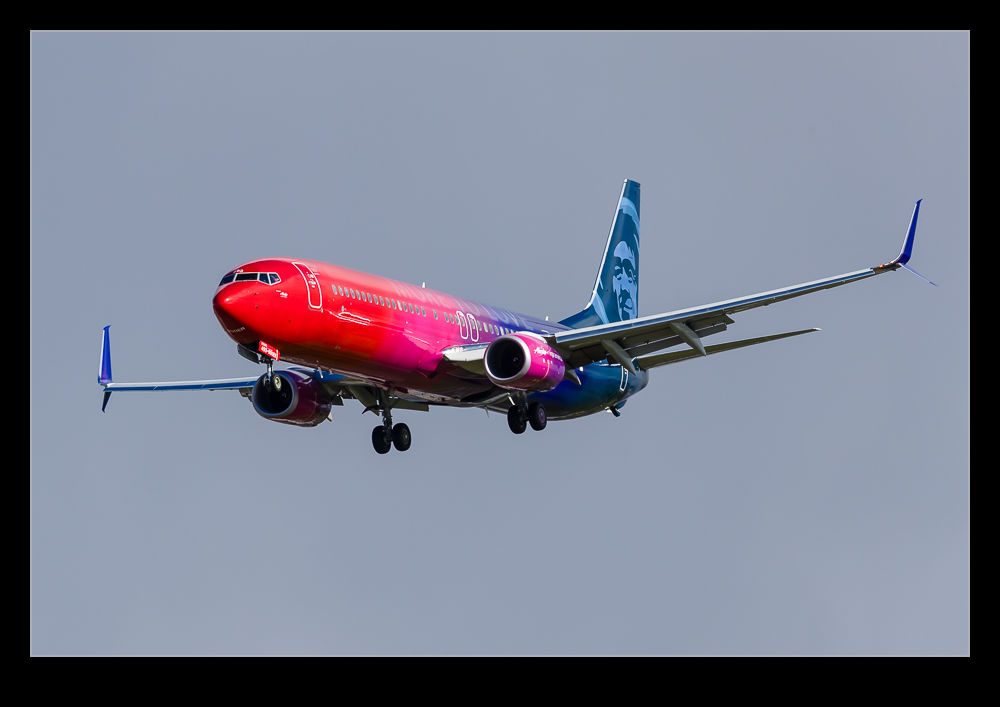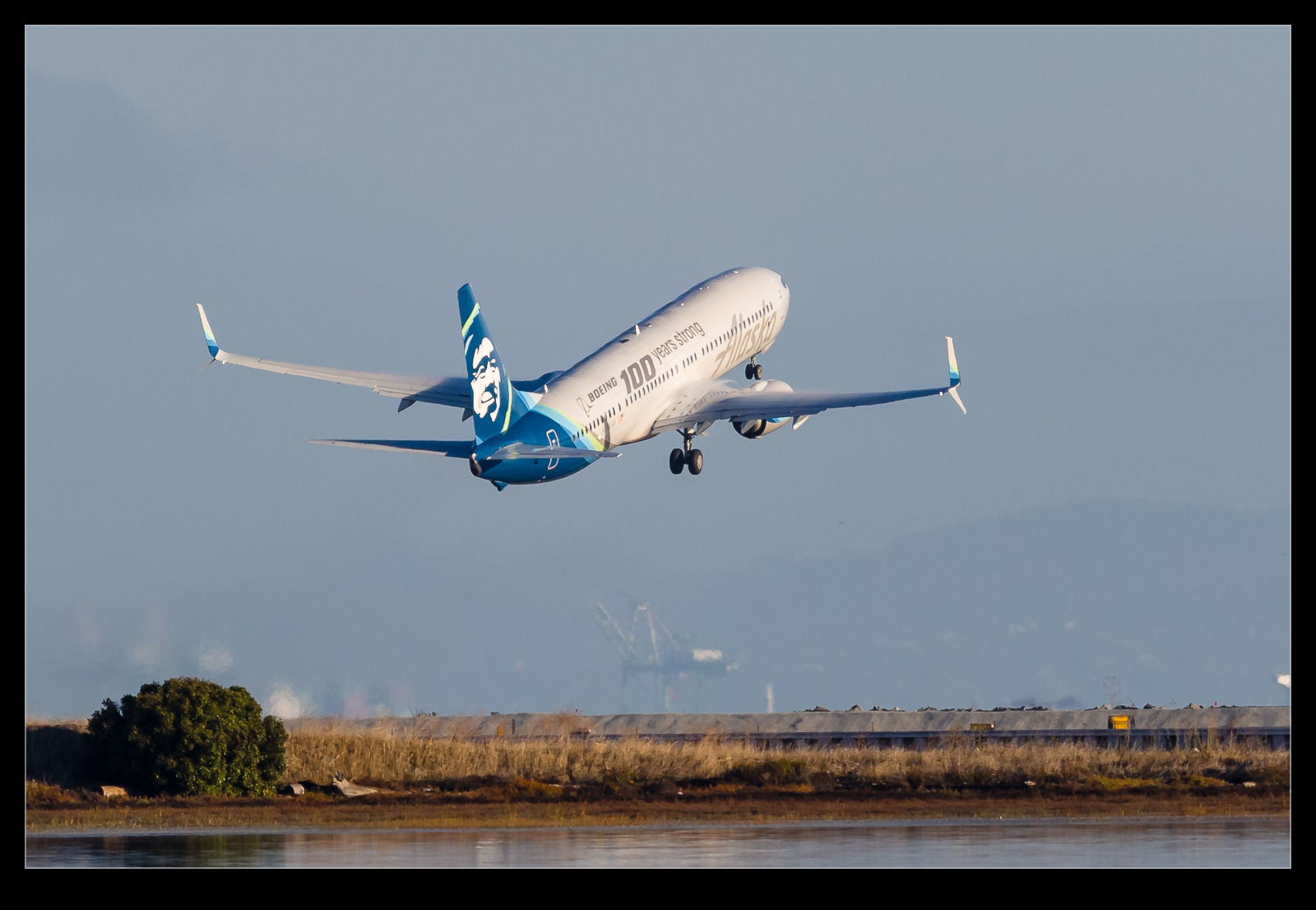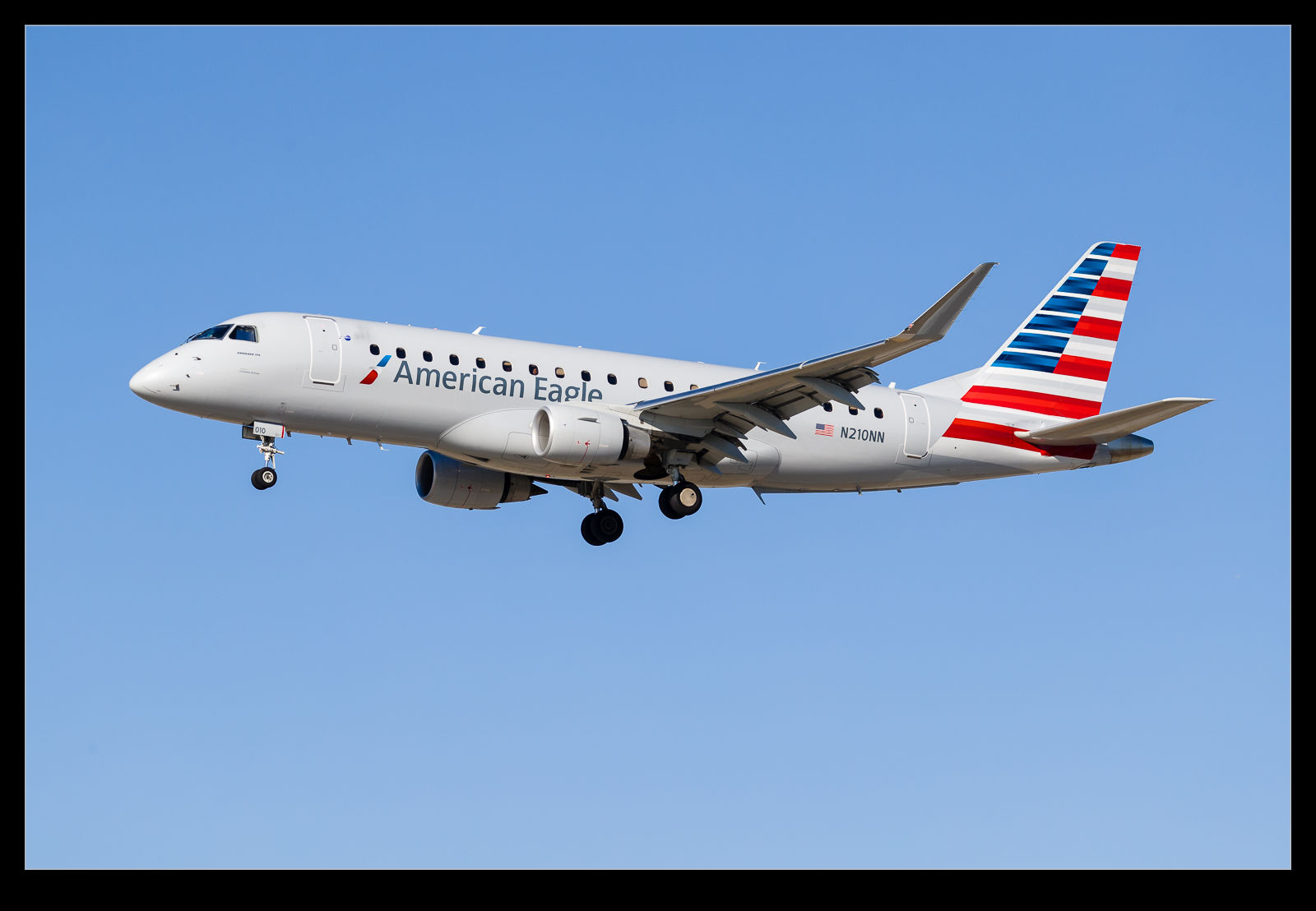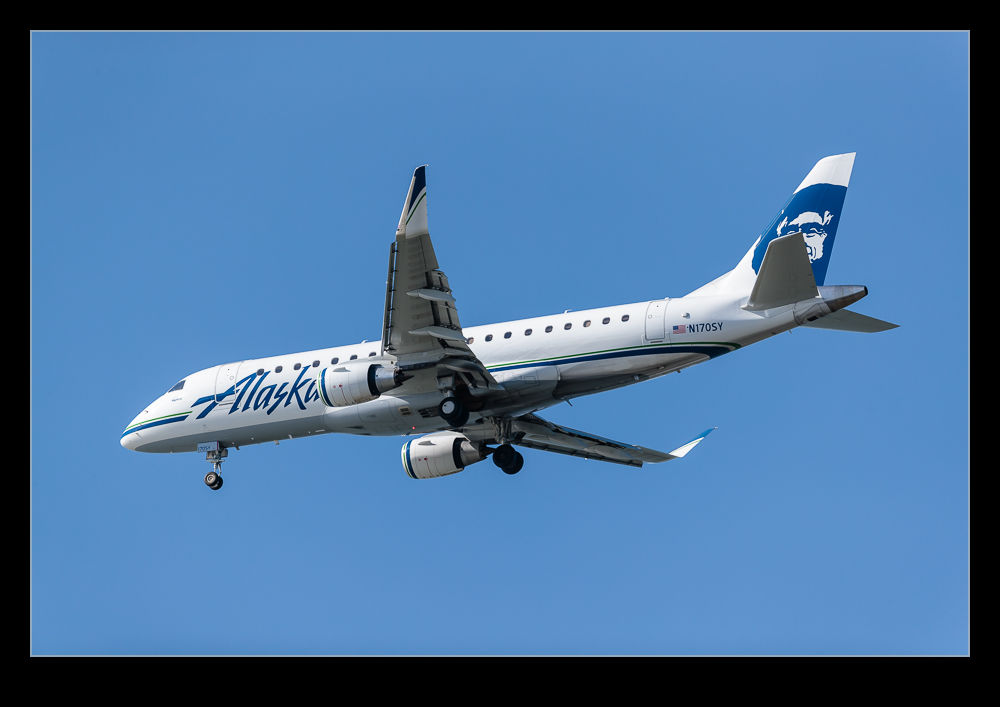 I put together a post about some interesting jet traffic at Anchorage from a visit I made long ago. While jet freighters are a big deal at Anchorage, the area is also known for its more unusual prop traffic. Some of these are vintage and others are types that have fallen out of favor elsewhere but continue to have a use in Alaska. Here are some shots of the various props I got to see while on that trip in the mid-2000s.
I put together a post about some interesting jet traffic at Anchorage from a visit I made long ago. While jet freighters are a big deal at Anchorage, the area is also known for its more unusual prop traffic. Some of these are vintage and others are types that have fallen out of favor elsewhere but continue to have a use in Alaska. Here are some shots of the various props I got to see while on that trip in the mid-2000s.
Tag Archives: alaska
Anchorage Jets
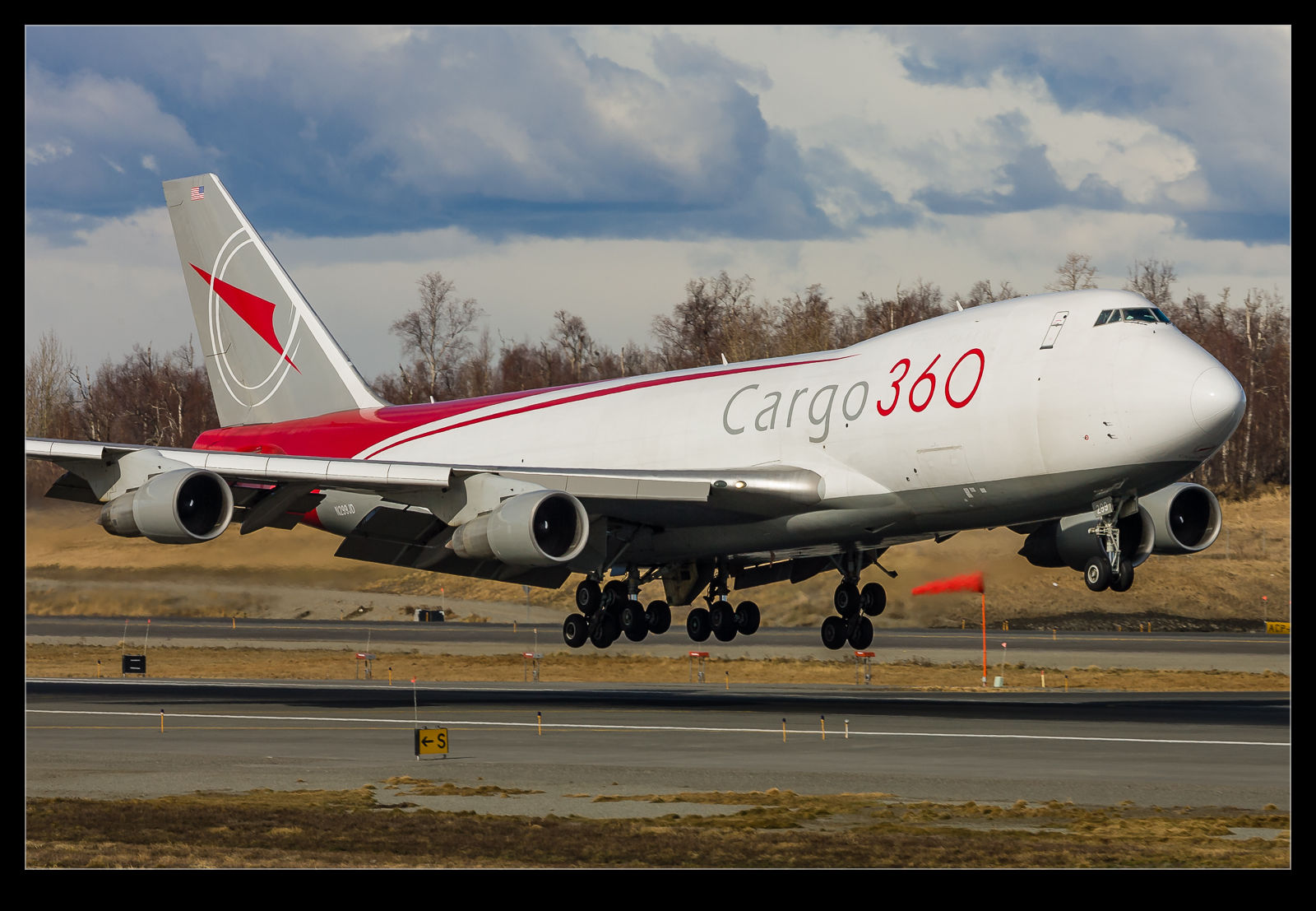 A step back in time to the mid 2000s. I had a work trip to Anchorage having been invited up by a potential client to discuss their business. We lived in Chicago at the time and I needed to fly to Seattle to connect to Anchorage. (Interestingly, the return leg was possible to make direct overnight.). I had not expected Anchorage airport to be too much. I knew, even then, that it was a hub for freight traffic across the Pacific but I did not think it would be that busy.
A step back in time to the mid 2000s. I had a work trip to Anchorage having been invited up by a potential client to discuss their business. We lived in Chicago at the time and I needed to fly to Seattle to connect to Anchorage. (Interestingly, the return leg was possible to make direct overnight.). I had not expected Anchorage airport to be too much. I knew, even then, that it was a hub for freight traffic across the Pacific but I did not think it would be that busy.
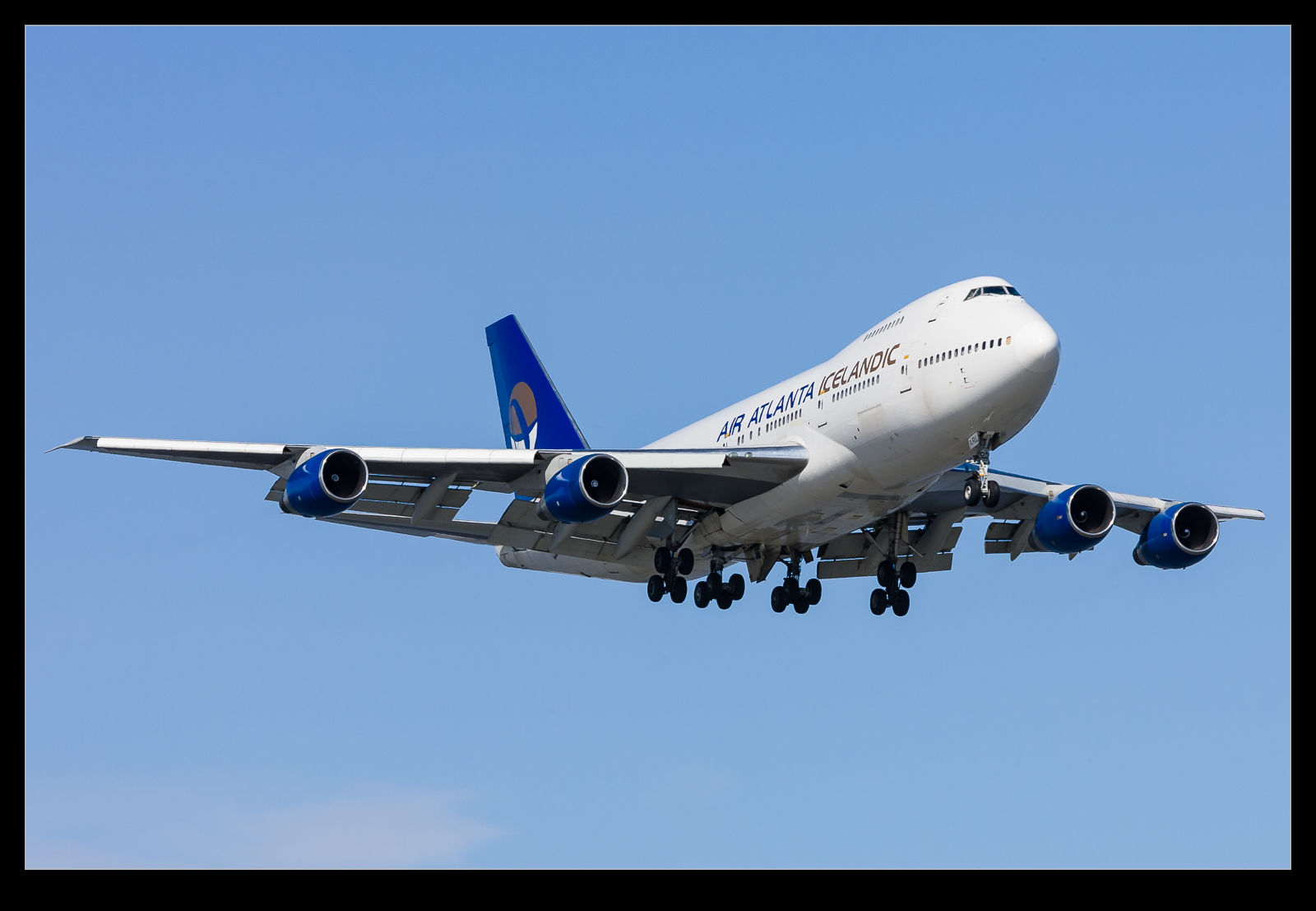 When we landed and I walked down the jet bridge, I looked out of the window to see rows of 747s, MD-11s and DC-10s. It was quite an eye-opener to see just how many large jets were laying over there. There was a steady stream of movements too. These planes were not just waiting around for business. The airport downtown was another reminder with everyone I spoke to in the bar being a crew on layover.
When we landed and I walked down the jet bridge, I looked out of the window to see rows of 747s, MD-11s and DC-10s. It was quite an eye-opener to see just how many large jets were laying over there. There was a steady stream of movements too. These planes were not just waiting around for business. The airport downtown was another reminder with everyone I spoke to in the bar being a crew on layover.
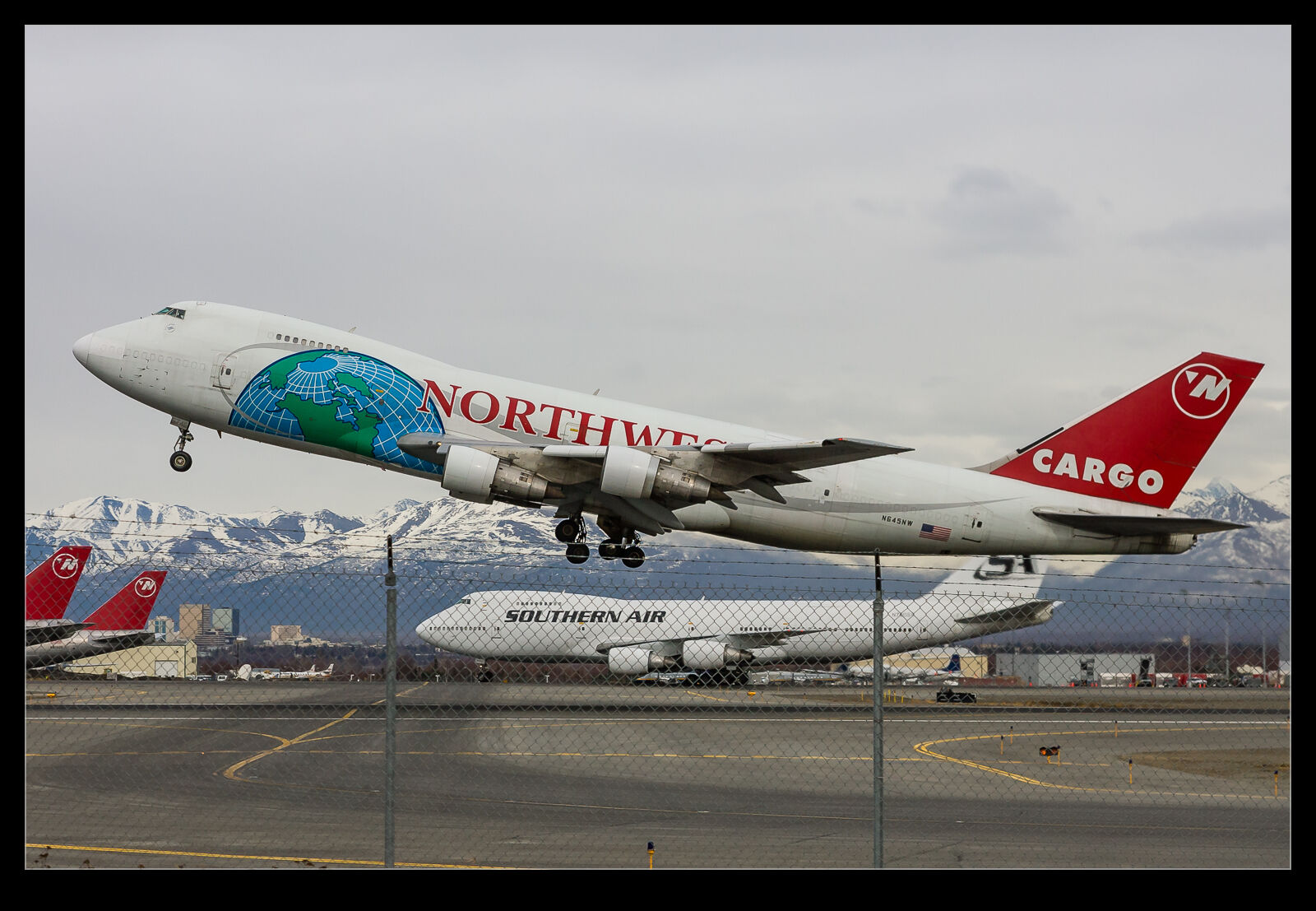 The meetings went well but didn’t lead to anything. The timing of the trips meant I had some time to kill so I spent a bit of time out at the airport watching the arrivals and departures. There were the unusual locals that Alaska is known for and the props will definitely be worth a separate post. For this one I shall share the jets that came and went. Many of these are types or operators that have ceased to be. It was a great thing to see and I’m glad I got the chance to be there, however briefly. A specific trip up is something I would like to try and do at some point. All those Alaska Airlines points have got to be worth something!
The meetings went well but didn’t lead to anything. The timing of the trips meant I had some time to kill so I spent a bit of time out at the airport watching the arrivals and departures. There were the unusual locals that Alaska is known for and the props will definitely be worth a separate post. For this one I shall share the jets that came and went. Many of these are types or operators that have ceased to be. It was a great thing to see and I’m glad I got the chance to be there, however briefly. A specific trip up is something I would like to try and do at some point. All those Alaska Airlines points have got to be worth something!
A Little SoCal Shoot As I Head Home
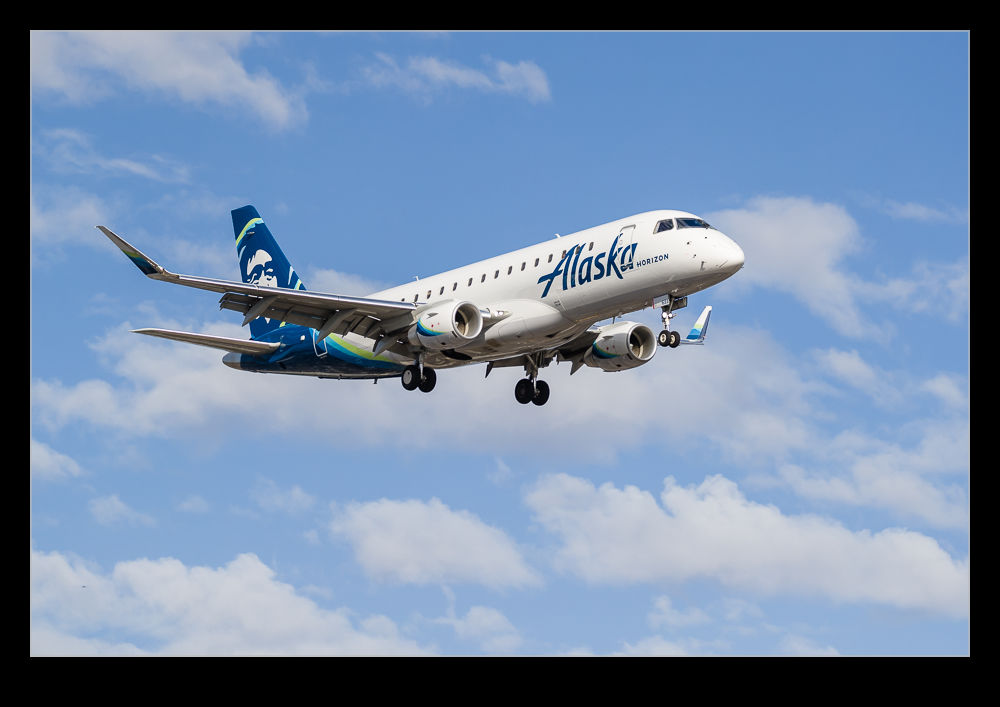 Half an hour of spare time on my way back to John Wayne Airport so I figured a quick shoot of approaches was worth a shot. It wasn’t going to be the most productive of shoots but why waste an opportunity. There were some regional jets and some airliners while I was there but also a few biz jets showed up. The sun was getting lower so the light was a bit more appealing. Even so, just a few stock shots for possible future use. Two Alaska Embraers came in but they were from different operators, Skywest and Horizon. I know someone who has a preference there (David).
Half an hour of spare time on my way back to John Wayne Airport so I figured a quick shoot of approaches was worth a shot. It wasn’t going to be the most productive of shoots but why waste an opportunity. There were some regional jets and some airliners while I was there but also a few biz jets showed up. The sun was getting lower so the light was a bit more appealing. Even so, just a few stock shots for possible future use. Two Alaska Embraers came in but they were from different operators, Skywest and Horizon. I know someone who has a preference there (David).
My Approach to Shooting and Processing on Crappy Weather Days
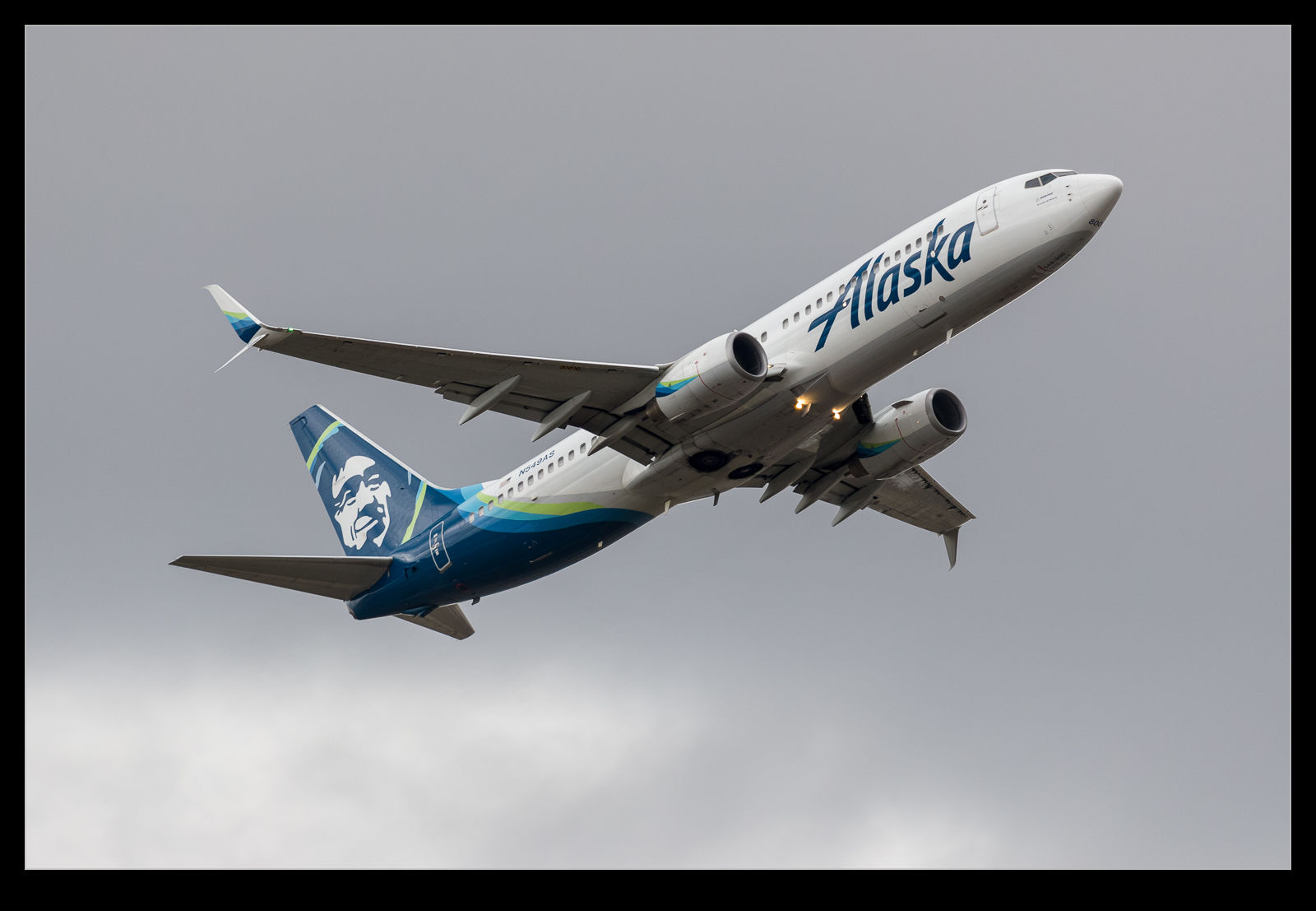
This is the finished image. This is pretty much what it looked like to the naked eye (through the viewfinder) when I took the shot given how dark the sky was.
A rare arrival was due on a day that was not good from a weather perspective. It was dull and rainy and so not what you would hope for. Conditions like this mean I try to exploit some of the features of the camera and the processing options available. First, how to set up the camera? With the light being bad and variable, I went to a pretty high ISO level. I shot in aperture priority mode and added a lot of exposure compensation.
In my experience, the metering is pretty good when shooting against the sky in clear weather but, when there is a lot of cloud, the camera tends to treat the clouds as too bright and it underexposes the subject too much. I use a lot of exposure compensation in this case with a setting of +2.0 being used on this day. The reason I do this is that, aside from the exposure question mark, there is a lot more information available in the lighter end of the exposure curve. Shooting in RAW gives you options.

This is how the camera recorded the image. This is the in camera JPEG that I extracted from the RAW file using Instant Raw From JPEG.
If you were to look at the aircraft at the time, you would see a dark and menacing sky but you would see plenty of detail on the plane. The camera does not see that for the original shot. The aircraft would be very dark. When processing, this dark area would give you something to work with but the variation in data would be more limited. Shoot overexposed and you get more to work with.
This approach will only work well if you are shooting RAW. If you are using JPEG, too much of the usable data will be discarded during the processing in the camera. To show you what I mean, here are two images. These are both from the same shot. One is the RAW file as it showed up when imported in to Lightroom and the other is the embedded JPEG that you can extract from the RAW file and which can be seen when the file is first imported before the rendering is undertaken. As you can see, the JPEG is over exposed but the RAW rendering seems even more so.
There is way more data in the RAW file though. Immediately, as I bring the exposure slider back down, the clouds go from being white to quite dark – just as they appeared on the day. Meanwhile, the fuselage of the aircraft has a lot of the data intact and maintains a lot of the brightness that you could see at the time. Very little needs to be done with the blacks and they are almost in the right spot by the time the exposure is good for the clouds. The fuselage might be a bit too dark though. A small tweak of the blacks and a little boost in the shadows to compensate for too much darkening with the exposure slider and suddenly the shot is looking a lot more like it did when I saw it develop.

My RAW processing baseline always results in a slightly more overexposed shot the embedded JPEG includes. When you first open the image, the embedded image you see in the previous shot initially shows up and then it renders the RAW file. This was the initial RAW rendering prior to any adjustments.
One advantage of shooting on such a crummy day is that the sky is a giant softbox – in this case a very soft one! The result is that the light is a lot more even than on a sunny day. The darker look can actually make the colors look a bit more intense than if they were losing out to the whites when the sun is right on them. While there was only one plane I was specifically there for, playing around with these other shots and working on the technique was a nice extra benefit.
Q400 Go Cougs
 Medford is not a busy airport for commercial traffic but it does have some regular services. Horizon seemed to be the most common operator (should I call them Alaska now?). Their Q400s were coming and going quite often. Horizon has been painting their aircraft in a large variety of schemes, many of which are associated with colleges around the region. (My friend David who works for them recently shared with me just how many there are so I might start trying to get them all.)
Medford is not a busy airport for commercial traffic but it does have some regular services. Horizon seemed to be the most common operator (should I call them Alaska now?). Their Q400s were coming and going quite often. Horizon has been painting their aircraft in a large variety of schemes, many of which are associated with colleges around the region. (My friend David who works for them recently shared with me just how many there are so I might start trying to get them all.)
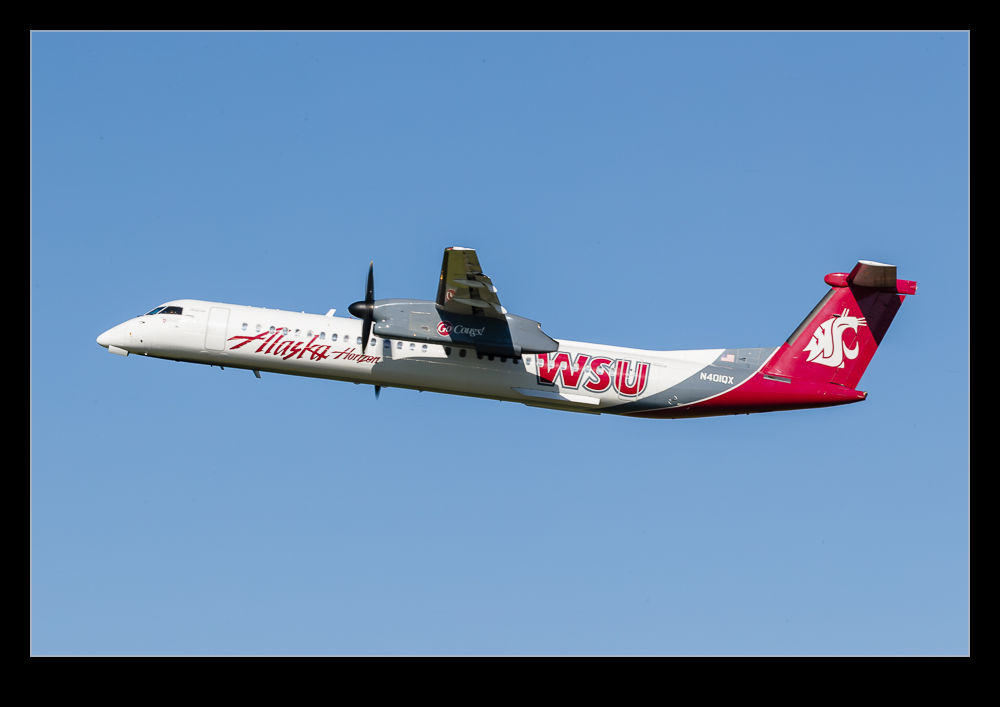 One of the planes is painted to represent Washington State University at Pullman WA. I have seen this one before a few times but this time it was taking off while I was driving around the airport to see what was there. It quickly climbed away past me but I got a better look at it than I had previously done.
One of the planes is painted to represent Washington State University at Pullman WA. I have seen this one before a few times but this time it was taking off while I was driving around the airport to see what was there. It quickly climbed away past me but I got a better look at it than I had previously done.
Veterans’ Alaska 737 – Finally!
 Alaska Airlines has a number of jets in special colors. My efforts to finally get the merger jet were covered in this post. One of the other jets that I never managed to catch in California was their Tribute to Service aircraft that is honoring veterans. My friend Roger caught it a number of times but I was always in the wrong place.
Alaska Airlines has a number of jets in special colors. My efforts to finally get the merger jet were covered in this post. One of the other jets that I never managed to catch in California was their Tribute to Service aircraft that is honoring veterans. My friend Roger caught it a number of times but I was always in the wrong place.
 Alaska is, despite the name, headquartered in Seattle so their jets are regularly rotating through SeaTac. Shortly after arriving here, I saw that this jet was coming in and, since I was nearby, I decided to see if it could finally catch it. Sure enough, I got it. I would also like to point out the sun and blue skies in this shot for those of you that think I have moved to somewhere where it only rains. It’s true that it does rain but not as much as you think so far!
Alaska is, despite the name, headquartered in Seattle so their jets are regularly rotating through SeaTac. Shortly after arriving here, I saw that this jet was coming in and, since I was nearby, I decided to see if it could finally catch it. Sure enough, I got it. I would also like to point out the sun and blue skies in this shot for those of you that think I have moved to somewhere where it only rains. It’s true that it does rain but not as much as you think so far!
The Merger Jet (At Last)
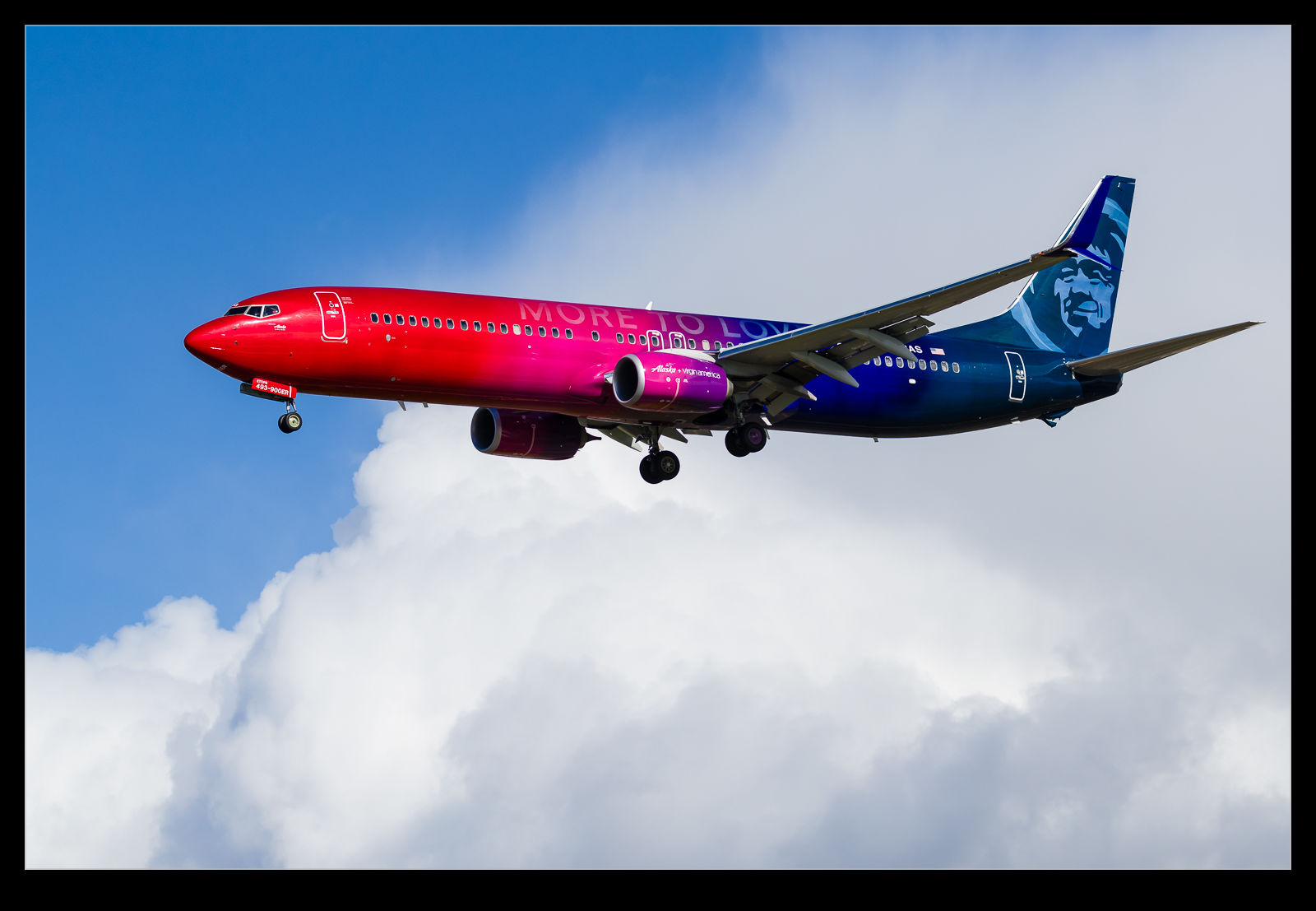 West Coast airline flying includes a lot of Virgin America. Headquartered in Redwood City, just down the peninsula from SFO, Virgin America has been struggling to establish itself as a carrier with a different level of service. It must have done well enough because Alaska got worried enough to buy it. They call it a merger but Alaska bought Virgin. Everyone wonder what will happen next since the fleets are totally dissimilar as is the customer service. Alaska repainted one of their jets in a new livery to celebrate the completion of the acquisition.
West Coast airline flying includes a lot of Virgin America. Headquartered in Redwood City, just down the peninsula from SFO, Virgin America has been struggling to establish itself as a carrier with a different level of service. It must have done well enough because Alaska got worried enough to buy it. They call it a merger but Alaska bought Virgin. Everyone wonder what will happen next since the fleets are totally dissimilar as is the customer service. Alaska repainted one of their jets in a new livery to celebrate the completion of the acquisition.
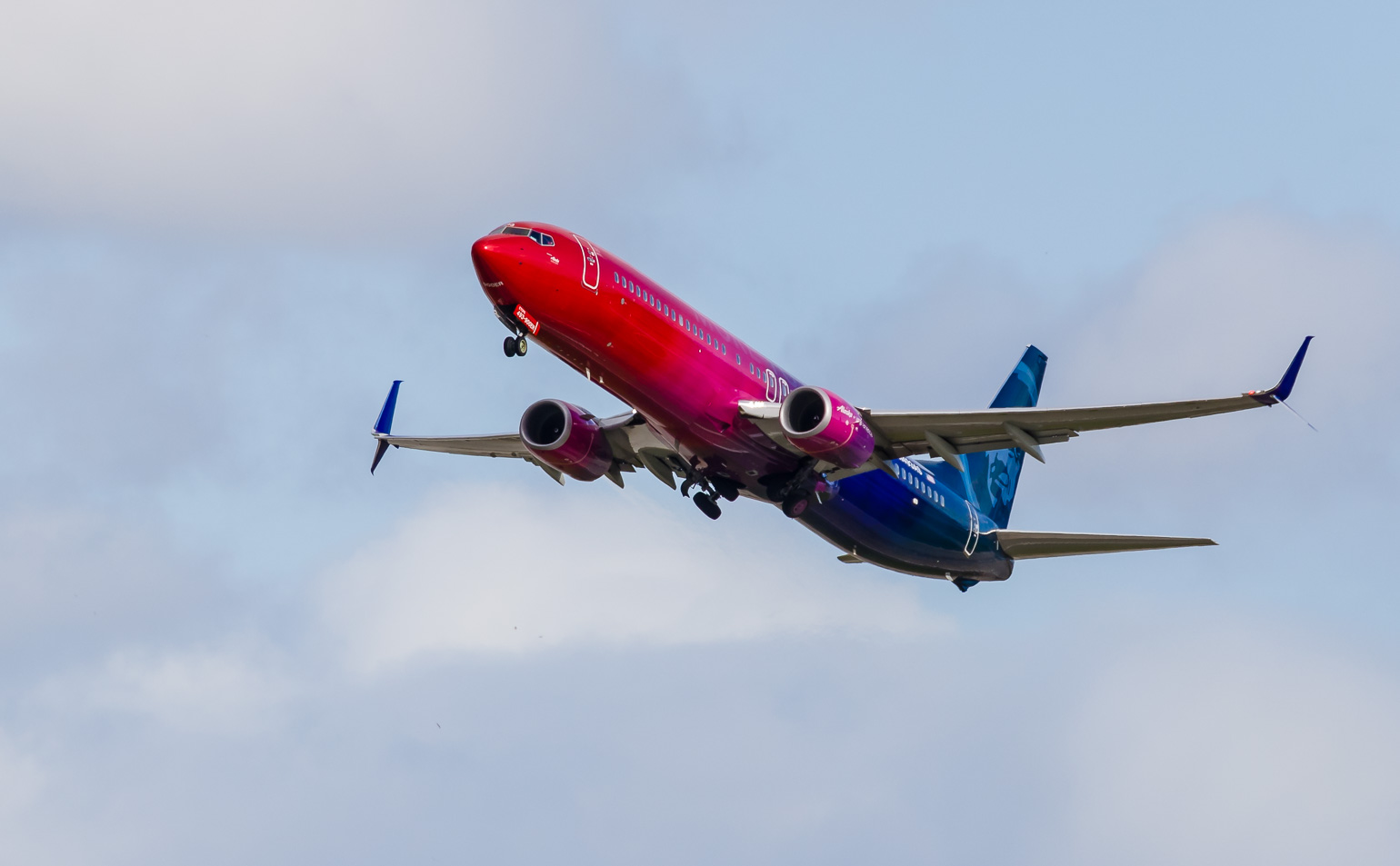 It is one of their 737-900s and the colors migrate from red to blue to symbolize the joining of the two. I have missed the jet on numerous occasions. I thought I was never going to catch it but finally saw it at San Jose. You are a lot closer to the flight path at San Jose which is good. What is even better is being there on the pouring rain when the clouds part five minutes before the jet arrives. Sadly, the weather closed in just as it took off again but the light was okay over the airport, even if it wasn’t where I was. Still, I finally got it!
It is one of their 737-900s and the colors migrate from red to blue to symbolize the joining of the two. I have missed the jet on numerous occasions. I thought I was never going to catch it but finally saw it at San Jose. You are a lot closer to the flight path at San Jose which is good. What is even better is being there on the pouring rain when the clouds part five minutes before the jet arrives. Sadly, the weather closed in just as it took off again but the light was okay over the airport, even if it wasn’t where I was. Still, I finally got it!
100th Anniversary Boeing by Alaska
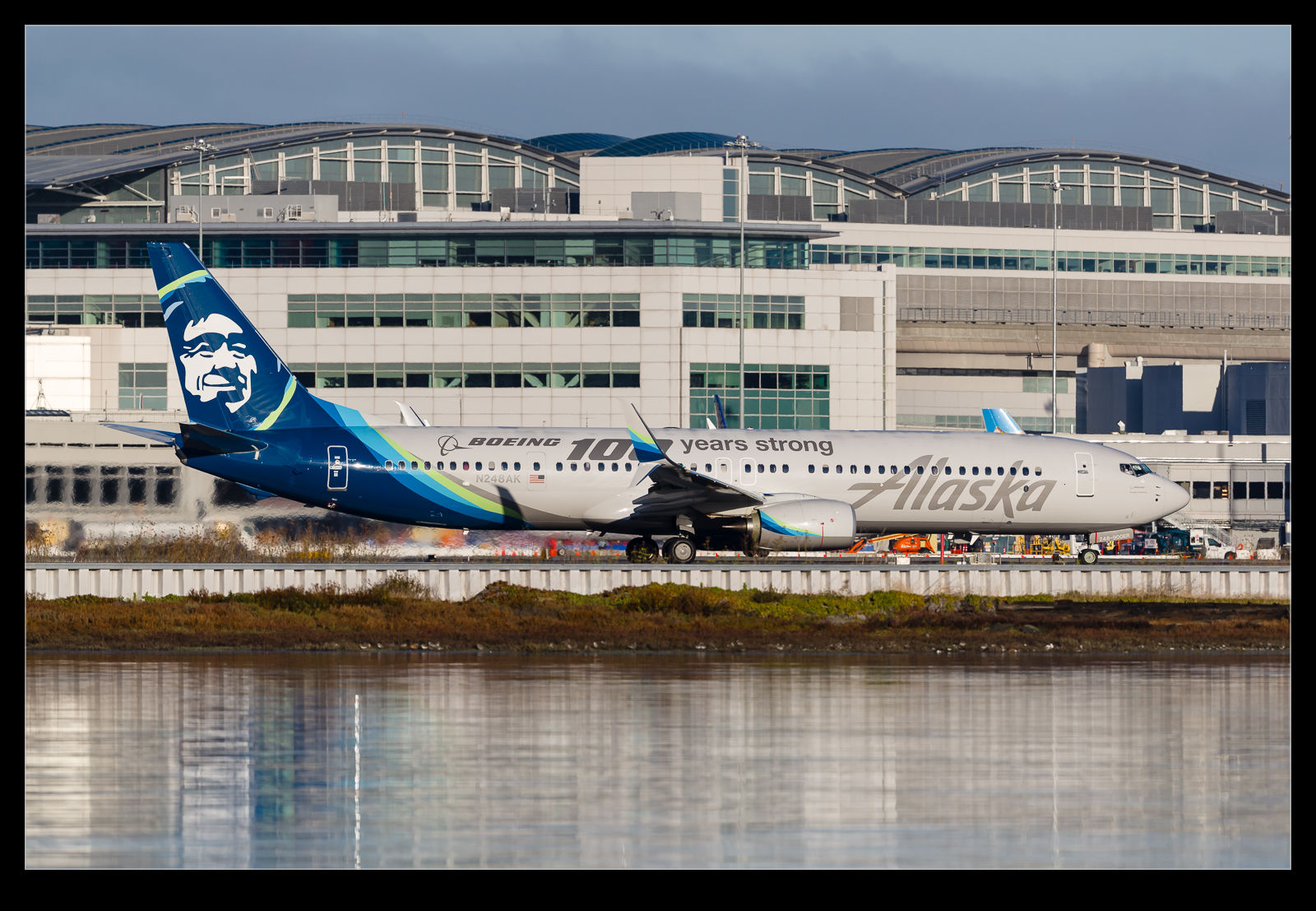 Alaska Airlines makes a big deal about being an “All Boeing” airline (which I assume does not count the Horizon Q400s and the Skywest Embraers). With Boeing celebrating their 100th anniversary, Alaska put some special markings on one of their jets. I was wondering where this jet was operating so I could shoot it but I lost track of it for a while. Then, imagine my surprise when it happened to be at SFO when I was there for something else. It lined up for departure early in the day when the light was best. Thanks Alaska!
Alaska Airlines makes a big deal about being an “All Boeing” airline (which I assume does not count the Horizon Q400s and the Skywest Embraers). With Boeing celebrating their 100th anniversary, Alaska put some special markings on one of their jets. I was wondering where this jet was operating so I could shoot it but I lost track of it for a while. Then, imagine my surprise when it happened to be at SFO when I was there for something else. It lined up for departure early in the day when the light was best. Thanks Alaska!
Rapid Takeover of the Embraer E175 E1
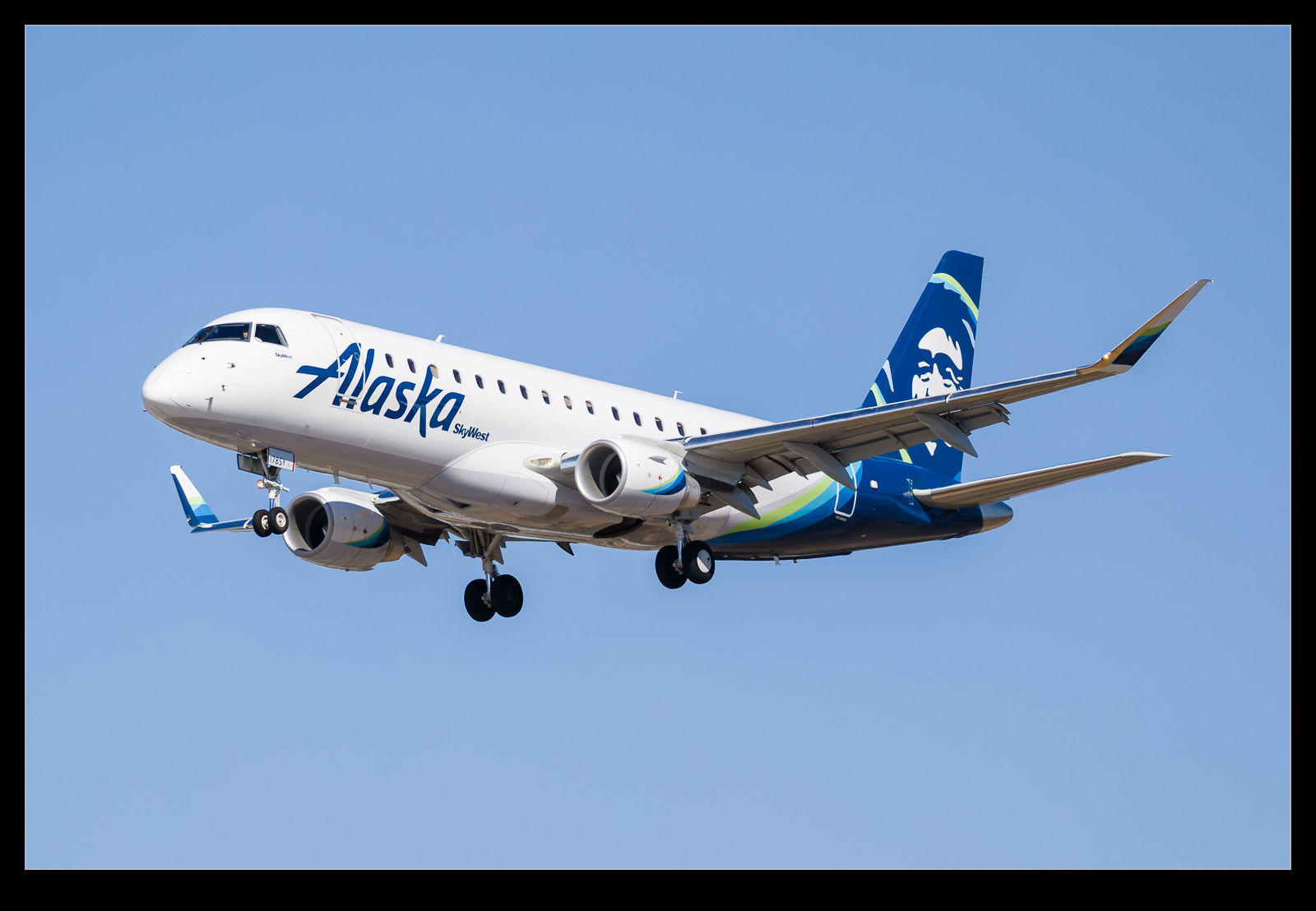 The step up in size that Embraer took when they create the E170/175 and E190/195 aircraft was important for them and it proved to be a successful move. Both types did well and have achieved a solid market presence. With a new generation of technologies coming, Embraer decided to go for a significant upgrade to the type with new engines and other systems resulting in the E2 versions. In line with that, they decided to tweak the current design to create the E1 upgrades. This turned out to be a well-timed upgrade as it came at a time when a whole bunch of airlines were looking to up-gauge their regional feeder services. Embraer picked up a ton of orders.
The step up in size that Embraer took when they create the E170/175 and E190/195 aircraft was important for them and it proved to be a successful move. Both types did well and have achieved a solid market presence. With a new generation of technologies coming, Embraer decided to go for a significant upgrade to the type with new engines and other systems resulting in the E2 versions. In line with that, they decided to tweak the current design to create the E1 upgrades. This turned out to be a well-timed upgrade as it came at a time when a whole bunch of airlines were looking to up-gauge their regional feeder services. Embraer picked up a ton of orders.
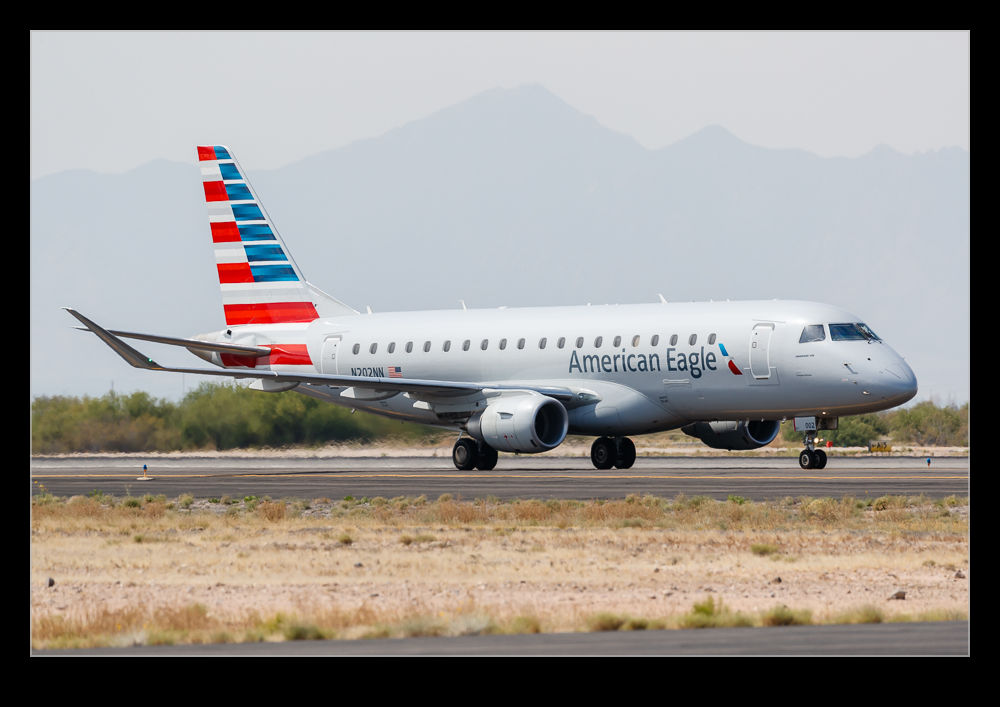 The speed with which these jets have entered the US fleets is impressive. Both United and American signed new deals for service with these jets and now you can regularly see their E175s feeding in to large airports. Alaska has gone a similar way (using Skywest much as United has) and their fleet of E175s is starting to grow. The E2 has now had its first flight in the larger E190 form but the 175 will follow in a few years. The E170 has been dropped from the line at this point. I imagine we will see even more of these jets as they will dominate this seating range which Bombardier seems to have ceded as they focus on larger jets.
The speed with which these jets have entered the US fleets is impressive. Both United and American signed new deals for service with these jets and now you can regularly see their E175s feeding in to large airports. Alaska has gone a similar way (using Skywest much as United has) and their fleet of E175s is starting to grow. The E2 has now had its first flight in the larger E190 form but the 175 will follow in a few years. The E170 has been dropped from the line at this point. I imagine we will see even more of these jets as they will dominate this seating range which Bombardier seems to have ceded as they focus on larger jets.
What, No Winglets?
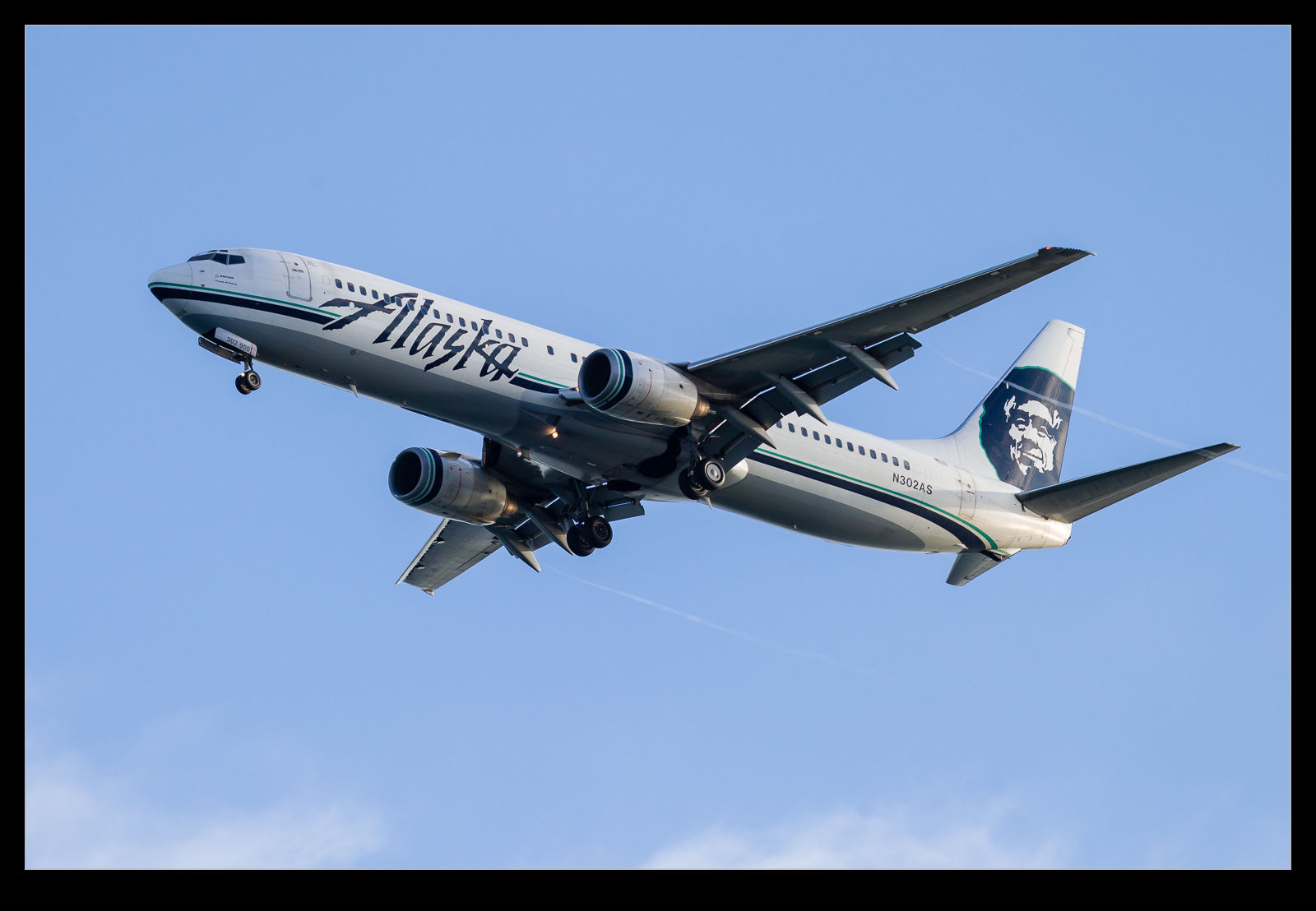 There is not a huge amount of variation in airliners these days so coming across something a little different is usually a moment of interest. While the name Alaska Airlines might suggest an airline focused on Alaska, it is actually headquartered in Seattle and seems to have a wide range of operations all across the west coast. Consequently, we see a lot of them in both Oakland and SFO. They have a large fleet of 737-800s and 737-900ERs and both types have been retrofitted with the APB Scimitar winglets. Apparently, not all of them though. This example I saw coming by Coyote Point and it not only doesn’t have Scimitars, it doesn’t have winglets at all. A rare beast these days.
There is not a huge amount of variation in airliners these days so coming across something a little different is usually a moment of interest. While the name Alaska Airlines might suggest an airline focused on Alaska, it is actually headquartered in Seattle and seems to have a wide range of operations all across the west coast. Consequently, we see a lot of them in both Oakland and SFO. They have a large fleet of 737-800s and 737-900ERs and both types have been retrofitted with the APB Scimitar winglets. Apparently, not all of them though. This example I saw coming by Coyote Point and it not only doesn’t have Scimitars, it doesn’t have winglets at all. A rare beast these days.
